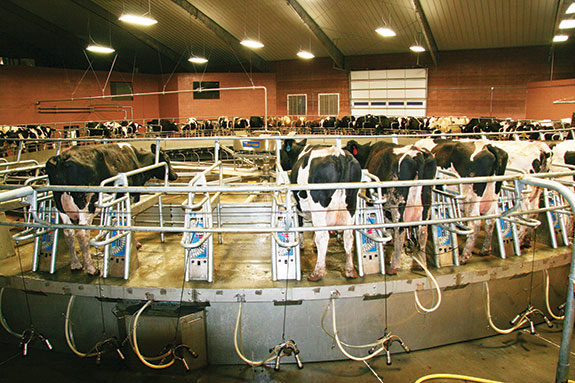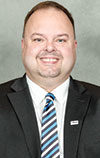Culling decisions are one of the more difficult and complex decisions dairy producers make. Deciding when to cull a cow involves many economic and non-economic factors. Choosing when less-productive cows should be culled is difficult.
Too often, this decision is made solely on barn capacity or restrictions on how many cows we want to milk.
Certainly, maintaining a minimum herd size is a valid reason for keeping cows when the bank dictates that barns should be kept full or for cash-flow reasons.
However, cows are often retained much longer than they should be. Keeping cows in the herd after production levels drop below feed costs results in significant losses and reduced profitability.
A simple way to examine culling decisions is to calculate the breakeven production level necessary to cover feed costs. At a minimum, a cow should cover the costs of the feed she is eating to remain in the milking string.

A table depicting breakeven milk production levels for varying feed cost and milk prices is provided (see Table 1 ).
As feed prices increase or milk prices decrease, the breakeven production level increases.
For example, when milk prices are high ($25 per cwt) and feed prices are low ($4 per cow per day), breakeven milk production level to cover just feed costs is only 16 pounds per cow per day.
On the other hand, when feed costs are high ($10 per cow per day) and milk prices are low ($12 per cwt), breakeven milk production level is 83 pounds per cow per day.
With today’s feed costs for many herds in the $8- to $10-per-cow range with milk prices around $20 per cwt, breakeven milk production levels range from 40 to 50 pounds.
As feed and milk prices change, dairy producers need to re-evaluate when cows should be culled.
Although difficult to consider, if the majority of the herd produces less than the breakeven milk production level, it may be time to consider exiting the dairy business.
This method for calculating when to cull dairy cows only accounts for feed costs. Feed costs account for the largest percent of total costs (50 to 75 percent) but do not account for all costs.
Thus, the true breakeven milk production level will be a few pounds higher than the levels in Table 1 and will vary considerably from farm to farm. Nevertheless, this serves as a quick reference guide for thinking about culling decisions because if a cow cannot even cover her daily feed costs, she may need to be culled or dried off early.
In practice, culling decisions also consider other factors. Probably the most important factor is whether the cow is pregnant. Another option for pregnant cows in late lactation producing below the breakeven milk production level is to dry them off early.
One must also consider the costs of feeding her during the dry period, particularly if she will be dry for a long time. Another way of looking at when to cull a cow is something called a retention pay-off. With retention pay-off, the future income potential of a cow is calculated and compared to that of her potential replacement.
The actual calculations for retention pay-off are fairly complex – although Dr. David Galligan from the University of Pennsylvania has an excellent dashboard to calculate the retention pay-off for an individual cow in your herd ( Click here to view this dashboard) – but the concept is useful when thinking about culling a cow.
For each cow, you should ask yourself, “What is the future income potential of this cow compared to the next replacement heifer that will be brought into the herd?” If the future income potential of the heifer is higher, the cow in question should be culled.
This concept helps us see that culling decisions should be different for older cows than for younger cows, as their future income potential is limited. The future income potential of a pregnant cow in late gestation is much higher than that of an open cow. The future income potential of a non-lame, low SCC cow is higher than a lame, chronically high SCC cow.
The list of factors could go on and on, but the important points to remember are:
1. Milking cows should at least cover the costs of the feed they consume to be retained in the herd.
2. Additional cow factors may help determine when to cull a cow accounting for her future income potential compared to that of her potential replacement. PD
Bewley is a dairy extension specialist at the University of Kentucky with a MS from the University of Wisconsin – Madison and Ph.D. from Purdue University .
—Excerpts from Kentucky Dairy Notes newsletter, October 2012
PHOTOS
TOP RIGHT: Although difficult to consider, if the majority of the herd produces less than the breakeven milk production level, it may be time to consider exiting the dairy business. Photo by PD staff.

Jeffrey Bewley
Assistant Extension Professor University of Kentucky Department of Animal and Food Sciences






